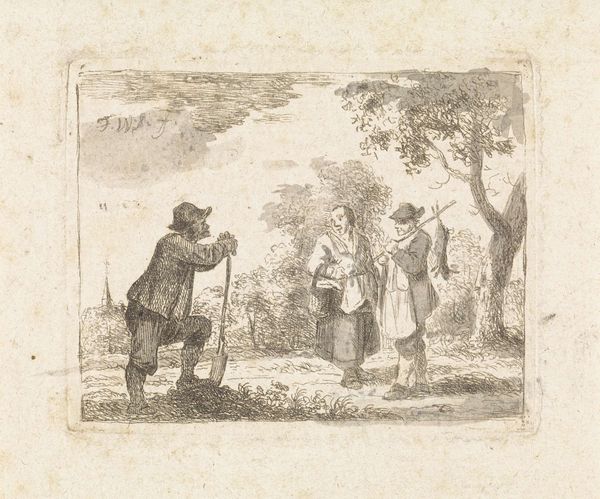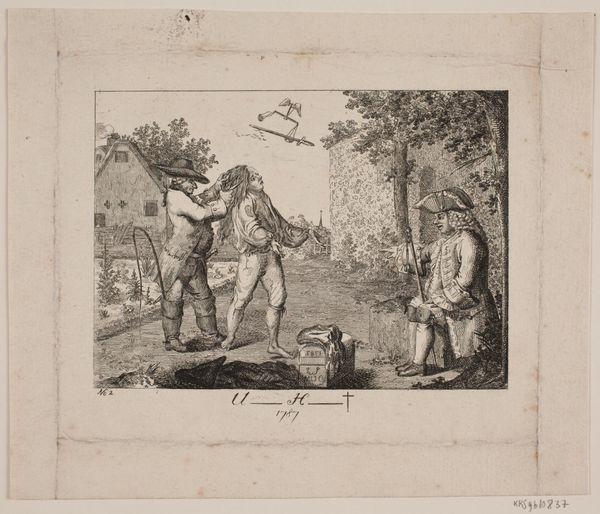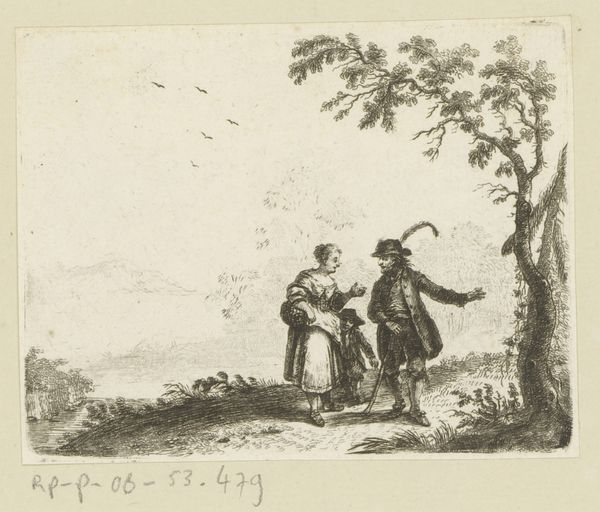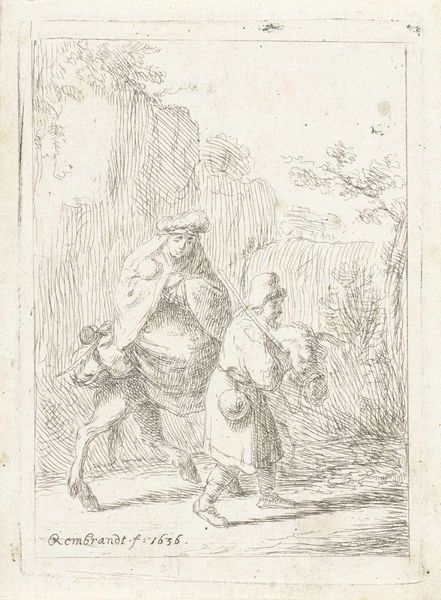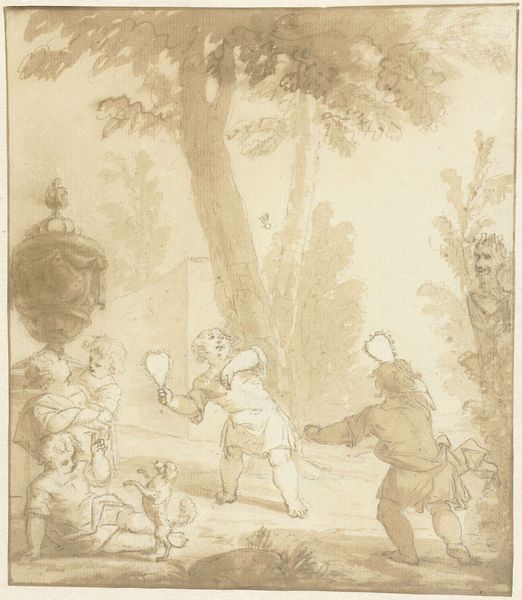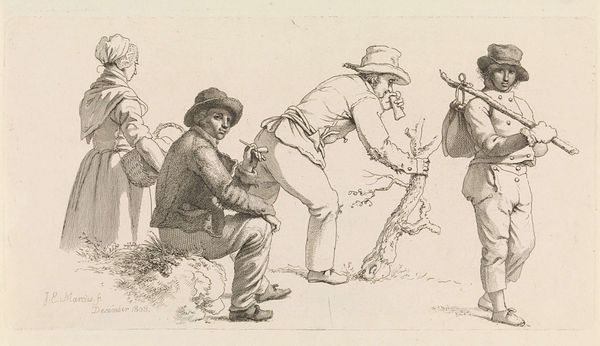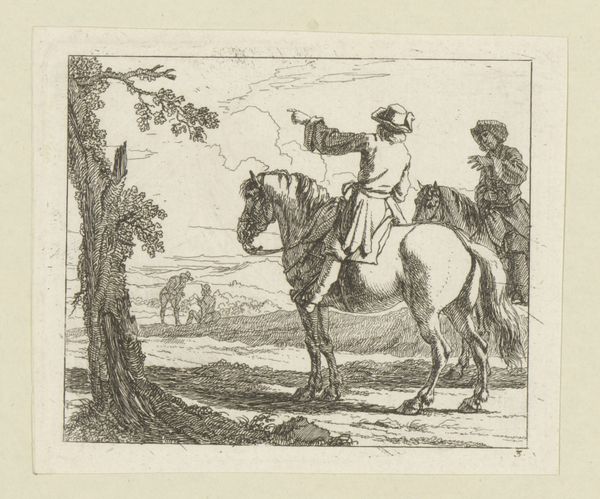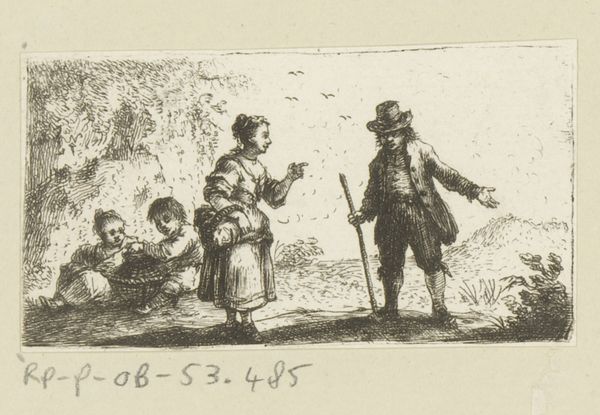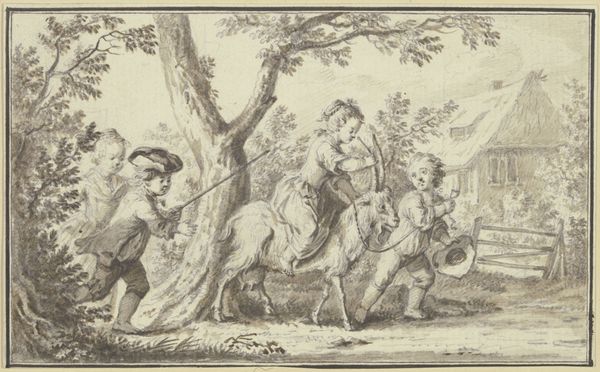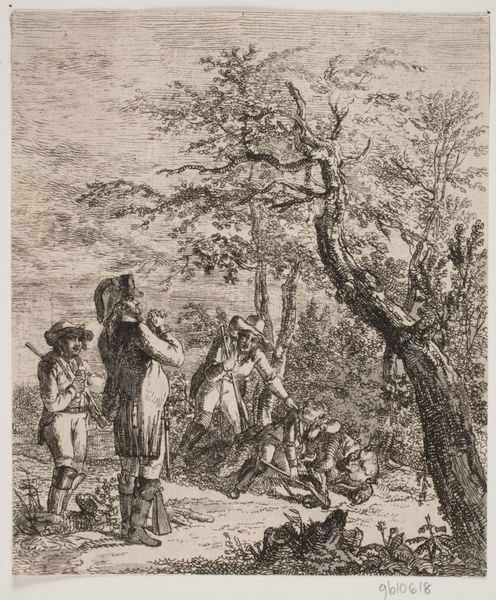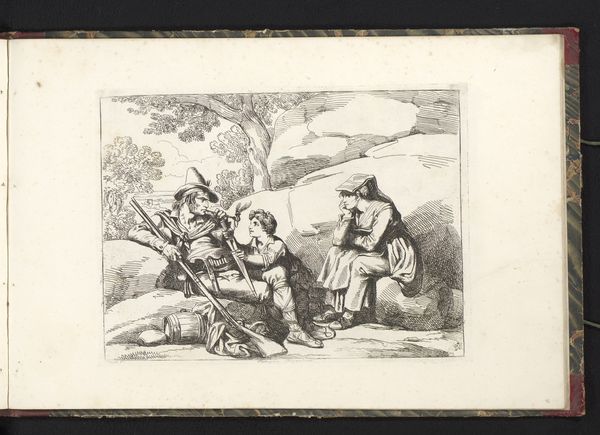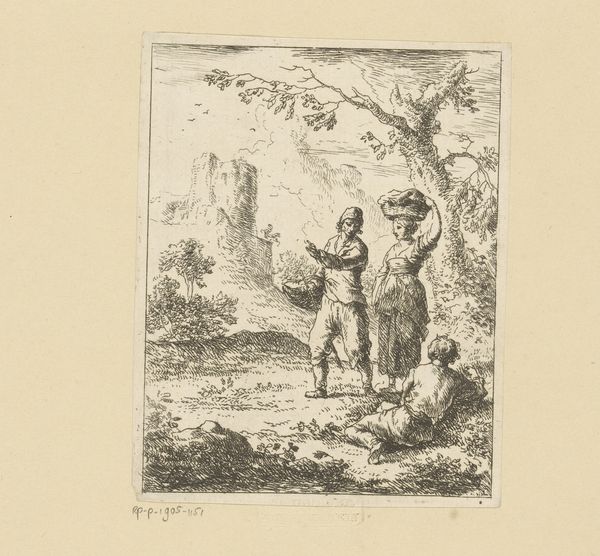
print, engraving
# print
#
landscape
#
15_18th-century
#
genre-painting
#
engraving
Dimensions: height 60 mm, width 77 mm
Copyright: Rijks Museum: Open Domain
Curator: Look at this etching; it's "Boeren in gesprek," or "Farmers Conversing." Made sometime between 1779 and 1793 by Marten J. Waefelaers, a printmaker active in the late 18th century. He captured a quiet rural scene through the precise art of engraving. Editor: There's a beautiful, melancholic feel here. The tones are all grays, suggesting an overcast day maybe, and the figures appear so deeply caught in their moment that they seem totally unaware they’re being observed. Curator: Well, that's characteristic of genre painting at that time; these prints offered glimpses into the lives of ordinary people. Waefelaers likely sought to portray a scene of authentic rural life, perhaps with a touch of social commentary, if one looks at similar pieces produced during that era. Notice the careful depiction of labour alongside themes of local community life. Editor: It's like eavesdropping on a private moment. The composition places us right in their world, but slightly removed as viewers. There's something timeless in that. Even the scratchy, almost unfinished style adds to the sensation that time is still passing in that scene. Curator: Yes, and the choice of printmaking also means the work was meant for wider distribution beyond aristocratic or courtly circles. This brought depictions of peasant life to more households. In that time of political tension in the Netherlands and Europe, images of country life are idealized and seen as free from political conflict. Editor: Looking at that fellow with the shovel, though, there's a solidity that feels very present. Is he tired, happy to stop, thinking of a drink after work? The image offers little but demands so much speculation of what that little conversation is actually about. It’s more of an atmosphere than a narrative, and isn't that perfect in its own way? Curator: I agree! By showcasing the common person, Waefelaers' work is more than just art; it acts as a social mirror. It asks viewers what meaning they assign to representations of farmers in Dutch society. Editor: Ultimately, whether capturing simple realism or constructing idealized fiction, it's a poignant observation of human interaction. It feels almost too subtle, perhaps too familiar, to not linger with a moment or two longer.
Comments
No comments
Be the first to comment and join the conversation on the ultimate creative platform.
